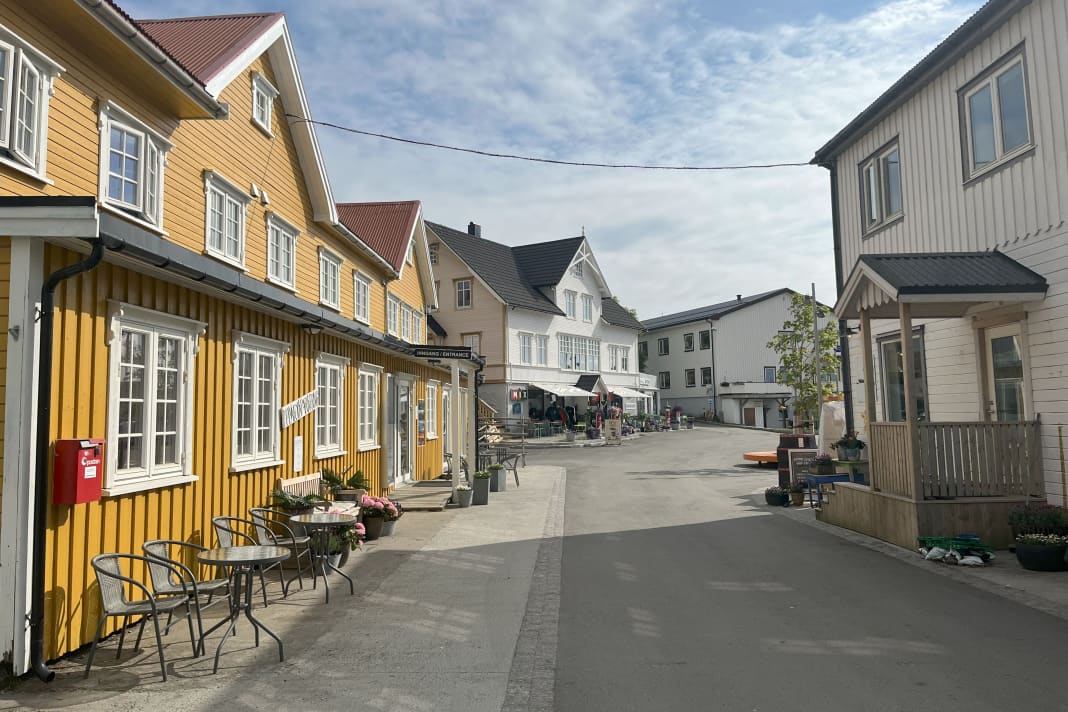Journey: A summer in the Arctic Ocean - from the Lofoten Islands to the Arctic Circle
Boote Redaktion
· 09.02.2024






A text by Markus Gehrlein
Today is 5 July 2023 and last night we sailed into Lofoten and moored in the port of Svolvaer, the main town in the archipelago. We are well on schedule and have plenty of time to explore the Lofoten Islands over the next few days. Svolvaer is a lively town with many excursion boats to the Trollfjord and a landing stage for the Hurtigruten. The inhabitants live on several peninsulas around the harbour. The main source of income is still cod, which is mainly processed into stockfish on drying racks. In the main fishing season from January to April, around 50,000 tonnes of this high-quality fish are caught.
In glorious sunshine, we leave the harbour the very next morning, heading for Henningsvær. The Vestfjord lies peacefully in front of us and we can stay close to land and enjoy the view of the rocky coast. Henningsvær used to be a picturesque fishing village scattered on small islands and connected by bridges and dams. Today, tourism sets the tone here in Lofoten's most famous village.
The approach is very well buoyed, but still requires great caution due to the countless rocks and shallows. The harbour itself was originally a sound running between two small islands, which is now closed off at the southern end by a dam. We find a comfortable berth on a very stable floating jetty in front of a restaurant. As almost everywhere on our trip, there is no harbour master. In most Norwegian harbours and motorhome pitches, you pay using the GoMarina app.
A paradise for anglers
We have the fishing village of Nusfjord on our programme for the next day. An absolute must if you visit the Lofoten Islands. There is a guest jetty there, but there is only room for two boats. So we cast off early in the morning to get one of the places. The approach to the fjord is quite easy and the surrounding landscape is spectacular. Unfortunately, we are not early enough. A Dutch and a Belgian sailing yacht are already moored at the jetty. However, the Belgian skipper tells us that he will be leaving tomorrow at 10am. There is also a suitable anchorage a little deeper in the fjord. But the shore is so rocky and steep that we couldn't go ashore with our 15-year-old Labrador. So we decide to head for Balstad, a few miles to the north. There we find a mooring for the night in the fishing paradise of Kræmmervika. A violent storm had already trapped us here for a few days 10 years ago. Since then, several rorbuer, former fishermen's huts that now serve as flats for guests, have been added and the pub has also been given a new lease of life. In the evening, a fisherman gives us a handsome coalfish, also known as saithe, which finds a place in our larder. The fishing grounds here are very productive. In addition to cod and coalfish, halibut is also a regular catch.
In the daylight hours, we observe a group of young moose crossing the bay. Moose are very good swimmers."
Years ago, we spotted a moose in Sweden that had swum several kilometres from island to island. We swap places with the Belgian yacht in Nusfjord at 10 o'clock on the dot the next morning. A few wooden houses around the harbour make up the small fishing village. Due to the lack of space, some of the huts were built on stilts and jetties. In summer, you can visit the village as an open-air museum and stay overnight in the huts. There is an inn, a bakery, a grocer's shop and several exhibitions. The very fine weather stays with us. Little wind is also forecast for the next few days. We want to take advantage of this to cross the Vestfjord to Bodø. It's only 55 miles, but it can be very uncomfortable. Even at 4-5 force winds, a steep sea builds up here. We don't have fond memories of our last crossing on the same course. In calm weather, you have a very good chance of spotting whales in this sea area. Unfortunately, however, we are denied this experience.
Our further journey home takes us past countless fish farms. The number of fish farms, which mainly export high-quality salmon all over the world, has increased significantly in recent years despite the reluctance to issue licences. According to official figures, there are around 750 farms along the coast.
On 10 July, we cross the 67th parallel. We want to visit the small bird sanctuary island of Fugløya. The island's harbour is quite small and is primarily used by the residents of the summer houses as a mooring for their fishing boats. With the permission of a Norwegian owner, we move a smaller boat to create a berth for us. White sandy beaches and crystal-clear water characterise the landscape. Millions of small fish frolic in the harbour basin.
On the recommendation of a Norwegian sailor, we call at Klokkergården on the island of Rødøya the next day. The island is only a few kilometres long and about 2.5 km wide. We weren't promised too much. There is a small hotel with a very good restaurant and the whole area is beautifully decorated and lovingly cared for.
On 15 July, we cross the Arctic Circle in a southerly direction. It feels like we are already back in our home territory. Only 1200 miles lie ahead of us to the Schlei. This is where the travelogue about our "excursion" in the Arctic Ocean ends. We want to be back home in six weeks at the latest. We are slowly getting used to the night sky and are looking forward to lighting a candle again.

